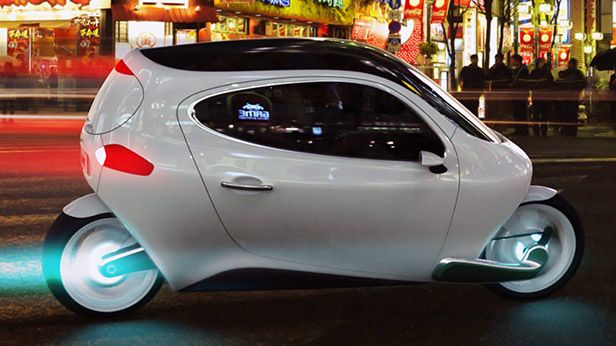While impossible to call any mode of transport the best, earlier this week, I stumbled upon what I think can be called the most environmentally practical single driver, fully electric vehicles designed to date and, in my opinion, definitely the coolest.
While attending a sustainable urban mobility symposium hosted by Agrion, a global energy network that is all about clean-tech and corporate sustainability, a statistical concept was discussed that grabbed my attention. Of all the energy necessary to get people from place to place by car, only 1-3% of that energy is actually used to transport the body that is driving it. 97% or more is used to transport the huge mass of the vehicle itself. So, of all of the CO2 and other emissions produced from cars that are contributing to global warming, 99% of it is essentially wasted on moving a huge and heavy vehicle.
What alternatives do we have? Public transportation? Yes, and geography, time and other factors don’t allow many people to take advantage of it all of the time. Most people who drive, drive alone, so why not motorcycles? Yes, they are economical, exciting, and efficient to get around in, and there is an increased risk of injury, and not so fun in the rain and cold. Electric cars? Yes, and while they use less carbon-based and other sources of energy to charge the batteries, still only 1-3% of that energy is used to move the person driving it. And currently most electric cars are limited to 80-mile journeys, and the battery technology, while improving, still makes them quite expensive.
Timothy Papandreou of SFMTA made a great point during the discussion, that bicycles, buses, electric cars, skateboards, scooters, and legs, etc. are not really “alternative” modes of transportation, but rather complementary. I bring up his point in the name of cooperation between the advocates of individual modes of transportation. There is no one best way to get around for everyone in all situations. Cars are not great for getting across town, and the bus is not great for transporting lumber. A skateboard is not great in the rain, and a bicycle isn’t practical to go long distances quickly. One mode or another, or a combination of modes of transportation are great for different situations.
In this growing, sharing, and sustainability aware economy, what we all should be working toward is finding that perfect balance of bikes, cars, buses, trains, skateboards, scooters, to own or made available to share, which will create a better flow for everyone, with the least amount of environmental impact.
We were then presented with a newly designed vehicle that blends the best features of a several modes of transportation. It blends together many of the great qualities of single driver vehicles: it's electric, it's affordable, it's a motorcycle, it drives like a car, it's fully enclosed, it's safe, it's fast, it's easy to find parking for it, and it's cool. It is called the C1 and is the brainchild of Daniel Kim, of San Francisco based Lit Motors. The C1 is a fully enclosed, two-wheeled electric motorcycle that has gyroscopic technology to keep it from tipping over.
It drives like a car with a steering wheel and pedals, but it automatically leans into corners like a motorcycle driver does to keep balanced. Ryan James of Lit Motors showed a video of the C1 getting T-boned at an intersection at 35 mph, and it retained it’s balance quite nicely, while the surrounding metal shell protected the driver.
Ultra redundancy of the components is built in for an extremely high level of reliability.
It is fully electric and can travel 200 miles between charges, and travel at speeds up to 120 mph.
It’s small enough to split lanes in traffic jams, and can park conveniently like a motorcycle can.
It is made up of 2,400 parts compared to 20,000-30,000 parts necessary to build a car.
The cost is in the neighborhood of $24,000, but the company projects that it can bring the price down to $14,000 by 2016.
Pre-orders for the first generation C1s, which will hit the streets in 2014, are at about 70%. You can reserve one of the first 10,000 made with a deposit of only $250.
While impossible to call any mode of transport the best, the C1's practicality, beauty, environmentally friendliness, and excitement that it provides, in my opinion makes it the coolest.
David LaBua is a leader in the sustainable urban mobility movement, author of Finding the Sweet Spot,and founder of VoicePark,the world’s first voice-guided mobile app that guides drivers to the closest available parking spot in real-time. Follow him on twitter @ParkingGuru
Related Articles
